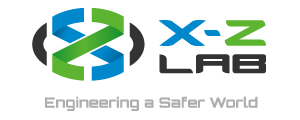Market research company NanoMarkets identified seven emerging trends in medical radiation detection. According to NanoMarkets, two-thirds of the market for radiation detection equipment is comprised of the medical and healthcare sector. Although this sector has a lower growth rate than others in the market, its sheer size makes it the market’s main revenue generator. NanoMarkets projects that growth within the sector will be primarily for X-ray and neutron systems, as the use of gamma ray imaging systems is on the decline in radiography.
Below is a summary of the seven trends:
- Smaller, portable devices
Devices aim for universality, or mobility of the system between rooms and setups. Smaller, lighter format detectors that allow for easier imaging of smaller anatomies are also entering the market. - Digital radiography (DR) vs. X-ray
DR offers many advantages over X-ray film: less radiation exposure to patients and radiologists; higher patient throughput; possibility of storing electronic data; and better image quality. Retrofit kits for analog X-ray systems also exist for those who want the benefits without completely replacing their current system. - The rise of 3D
There is greater demand for 3D images taken from machines directly, while digitization of 2D information will decline. Technologies using 3D imaging include 3D dual-energy X-ray absorptiometry (DEXA) and 3D mammography/digital breast tomosynthesis. - Multidetector CT (MDCT) scanners
MDCTs acquire multiple slices or sections simultaneously, speeding up image acquisition. - More combinatorial diagnosis
An increasing number of clinical applications are being based on multimodal imaging systems (MIS), including anatomical (CT, MRI) and functional (PET, SPECT) techniques to provide complex information in a single image. - Improved components and materials
Developments in ceramic scintillators have improved efficiency and response time. - Complex software and advanced algorithms
New software and algorithms are being employed to distinguish analysis radiation from background noise. This is especially applicable to 3D imaging and reconstruction, such as DEXA and PET.
